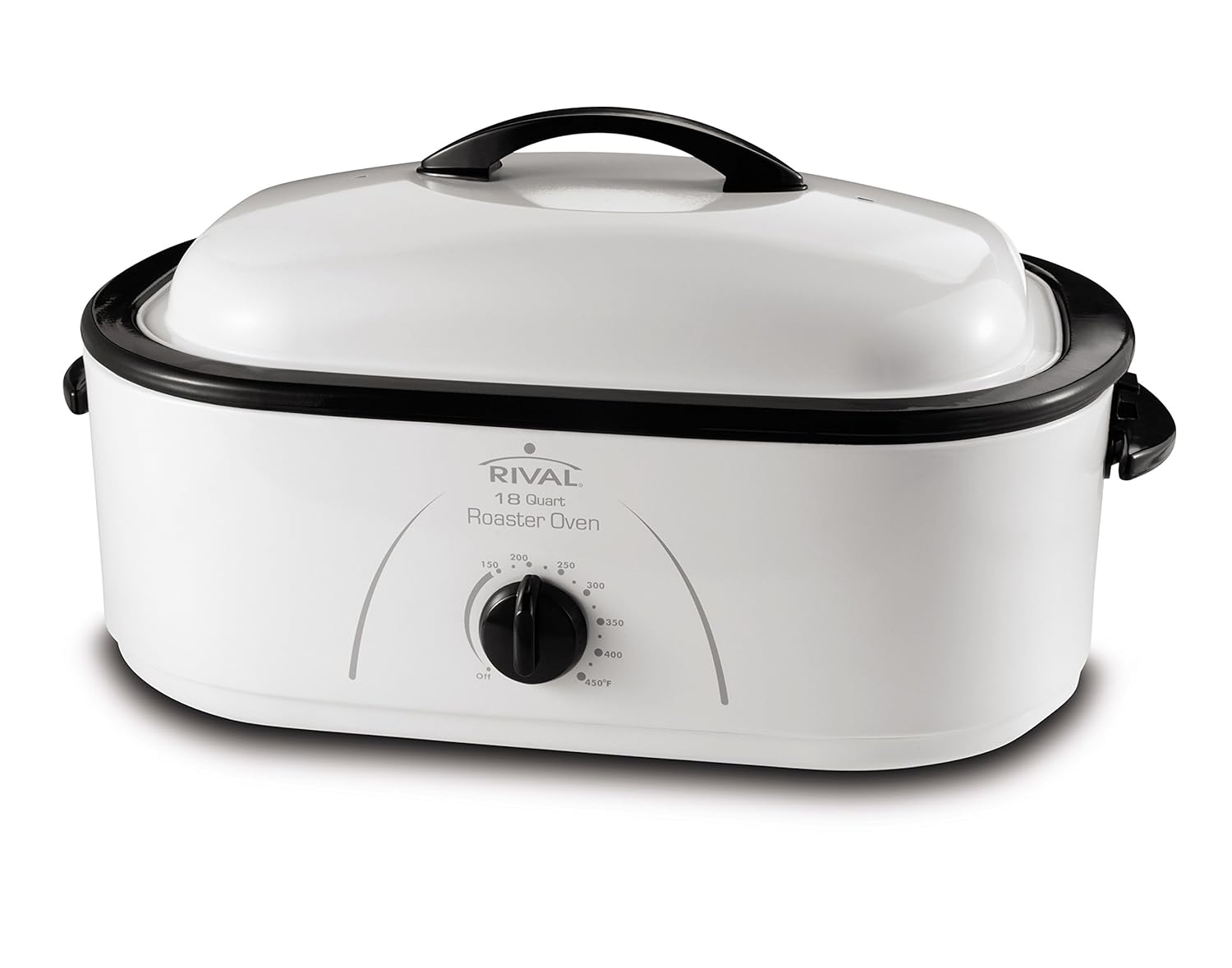jennyema
Chef Extraordinaire
That's 165, right?
Oh Dear! Good catch!!
It might be stuffing flambé at 365!

That's 165, right?




I've never used a Nesco. To me it appears to be a big slow cooker. Other than size, what's the difference?
My Rival has an 18 quart capacity. I have no idea what the wattage is.What is the size and wattage of the nesco or rival?
Counter top kitchen appliances are designed to work with household electrical circuits. In the USA, household electricity is provided at a standard 120 volts. A standard circuit in a residential home is limited by a 15 amp circuit breaker or fuse.
If you do the math, the maximum wattage you can generate is 1800 watts. I'd guess a roaster would be close to that limit.

My Mom's was a Sunbeam 16 quart roaster, and it was OLD. It had a cabinet stand with wheels and storage and could be rolled to wherever it was most handy. I think my sister has that one. It has to be more than 50 years old and still going strong.

With the Julia Child method, turkey gets cut up into the breast with the wings section, and the legs and thighs. You cook the breast piece for 30 minutes first, then place all the pieces on top of the stuffing so you can make 2 or 3 times as much stuffing as will fit inside even an 18 pound turkey, yet is still gets all the juices from the roasting turkey. It also takes up less room in the pan because you've removed a big part of the turkey that never gets eaten anyway.
This is a Rival roaster oven. Nesco is pretty much the same thing.

With the Julia Child method, up to a 20 pound turkey will fit in a roaster that normally only holds a 16 pound whole turkey.
Counter top kitchen appliances are designed to work with household electrical circuits. In the USA, household electricity is provided at a standard 120 volts. A standard circuit in a residential home is limited by a 15 amp circuit breaker or fuse.
If you do the math, the maximum wattage you can generate is 1800 watts. I'd guess a roaster would be close to that limit.
I meant physical size. Asked about wattage because I only have 20 Amp breakers. Which to keep from tripping the breakers I estimate at 2000 watts.
The Rival 18qt roaster oven is listed at 1450 watts from what I see for specs.....15A should work.
Modern codes require 20A circuits in the kitchen and those near the sink must have ground-fault protection. Older homes may not have the higher rated circuits. When I wired my house in 1979 the codes had just been changed to require the 20A circuits for the kitchen.
